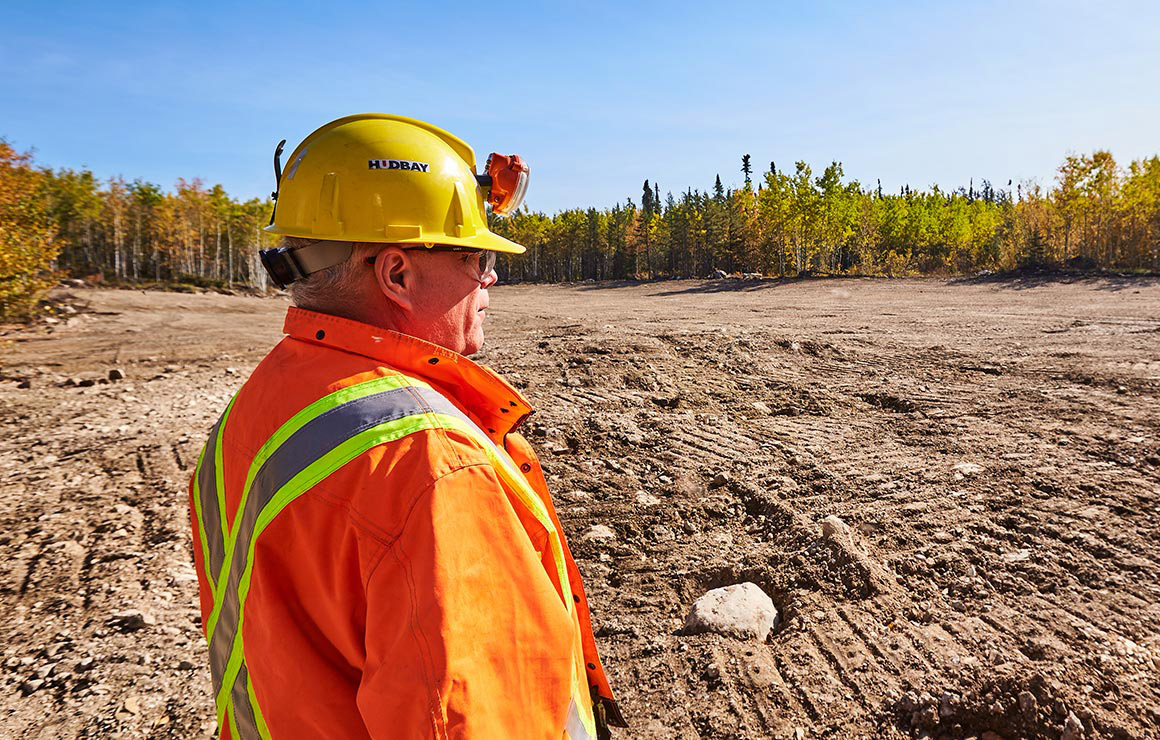

Reed was unique in that it offered a high-grade concentrated deposit, but it was small; it had an estimated mine life of only five years. The plan included designing the mine to have a very limited environmental impact due to its location in an environmentally sensitive area.
The permitting process for Reed was rigorous given the location of the mine and concerns about environmental impacts. Hudbay made every effort to not just meet the requirements in the permits, but to exceed them when possible.
For example, while Hudbay had approval to clear trees on 14 hectares for the site, it only needed half the area. The site team explored ways to keep as many trees as possible by trimming branches instead of cutting trees down and modifying road routes if it meant fewer trees would need to be removed. Rather than clearing a distinct rectangle for the site, islands and peninsulas of trees and vegetation were left untouched to accelerate reclamation and revegetation once the site closed.
The Company minimized the number of buildings and facilities needed by trucking ore to the concentrator at Flin Flon.
With the five-year life of mine timeframe in mind, all buildings were either portable (e.g., trailers) or built to be easily dismantled. The truck shop was the only facility built on a concrete foundation. All other buildings sat on crushed limestone.
The site’s personnel also did their part to limit impacts by recycling and hauling waste and used materials off the site as soon as possible, and by keeping the site free of any kind of litter, including used cigarettes.
One of the biggest environmental issues faced by the team at Reed was that the mine was built below a major aquifer. If it was accidentally pierced, water from the aquifer would have poured into the mine at a rate of more than 1,200 gallons per minute. To mitigate the risk and reduce the amount of water that needed to be pumped out of the mine, a “grout curtain”, requiring 19,000 bags of cement, was built, keeping water seepage to a manageable six to 10 gallons per minute.
The team treated all waste rock as potentially acid generating when brought to the surface. When closure activities commenced, the waste rock was then returned to the underground mine to fill voids and improve stability.
Another concern was the mine’s impact on local animal populations, particularly caribou. Hudbay’s longstanding support for Manitoba’s Boreal Woodland Caribou Recovery Strategy – a multi-year plan that supports recovery efforts and protection of the woodland caribou in northern Manitoba – provided crucial data for tracking migration routes near the mine site and assessing any impacts. A number of on-site staff members participated in the caribou monitoring program. The site also avoided establishing straight roads or other linear features that give an advantage to caribou predators, used quiet generators to mitigate noise impacts and placed venting fans underground.
As soon as operations ceased in July of 2018, the team moved into the closure phase. The attention to detail the site team employed during the operating phase allowed them to achieve numerous closure milestones by the end of the year.
All buildings have been removed, many of them being repurposed or sold. Soil that had been disturbed during construction and set aside was used to contour the land to the original topography and drainage patterns. Viable seeds from plants on-site will be planted to help revegetate the area.
In consultation with Manitoba Sustainable Development officials, the team will continue environmental reclamation and monitoring, evaluating every square inch of the site to confirm it has been cleaned up and is ready for revegetation.
A key contributor to the successful closure of Reed was that there was a continuity of personnel and shared knowledge that delivered top expertise and first-rate execution during every stage of the mine lifecycle.
Regarding expectations for the site’s future, Jay Cooper, Director of Environment for Hudbay’s Manitoba Business Unit, says, “Five years from now, people walking through the site will notice that the vegetation looks a little different – more grasses and younger trees – but they won’t know there once was a mine there.”